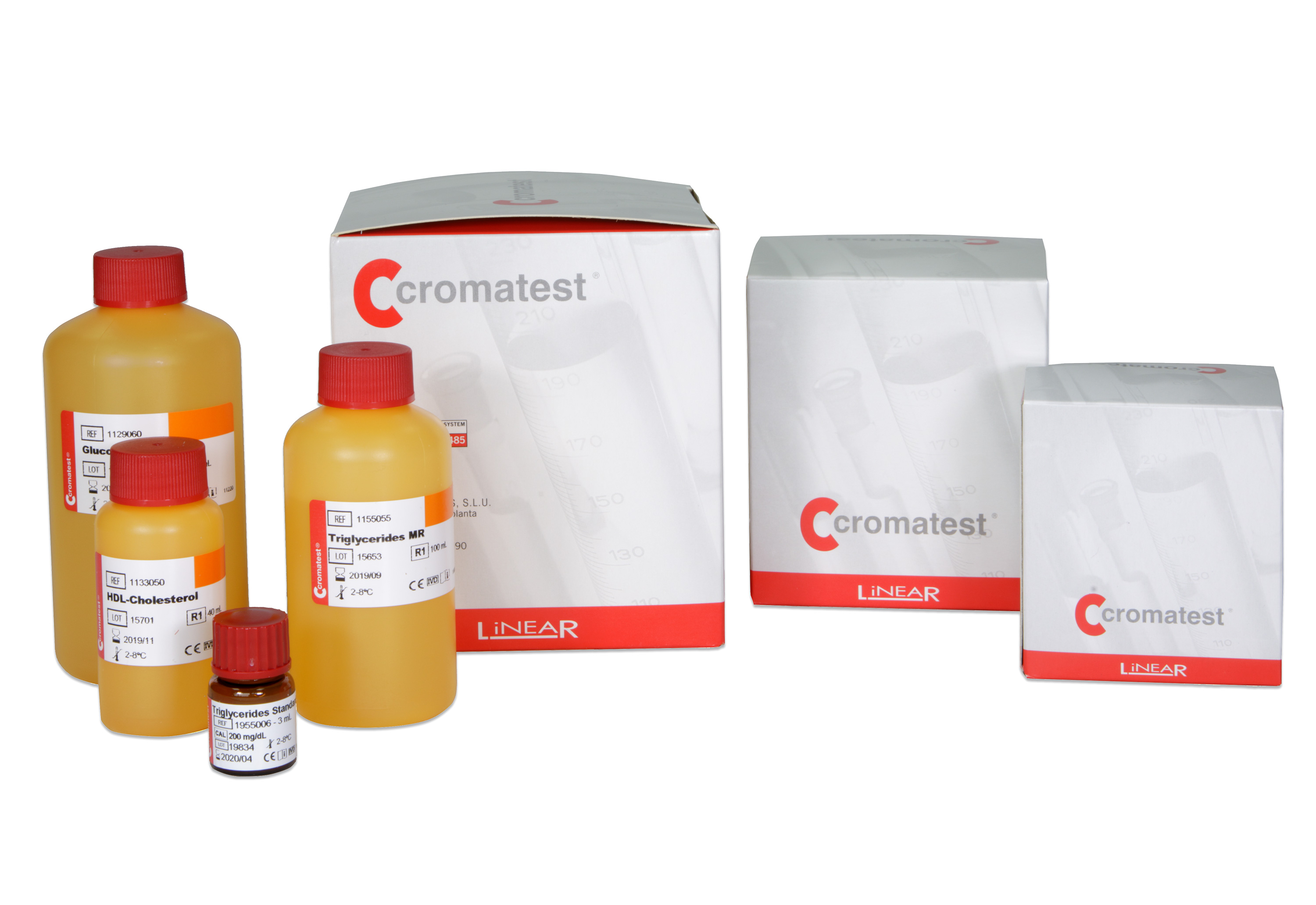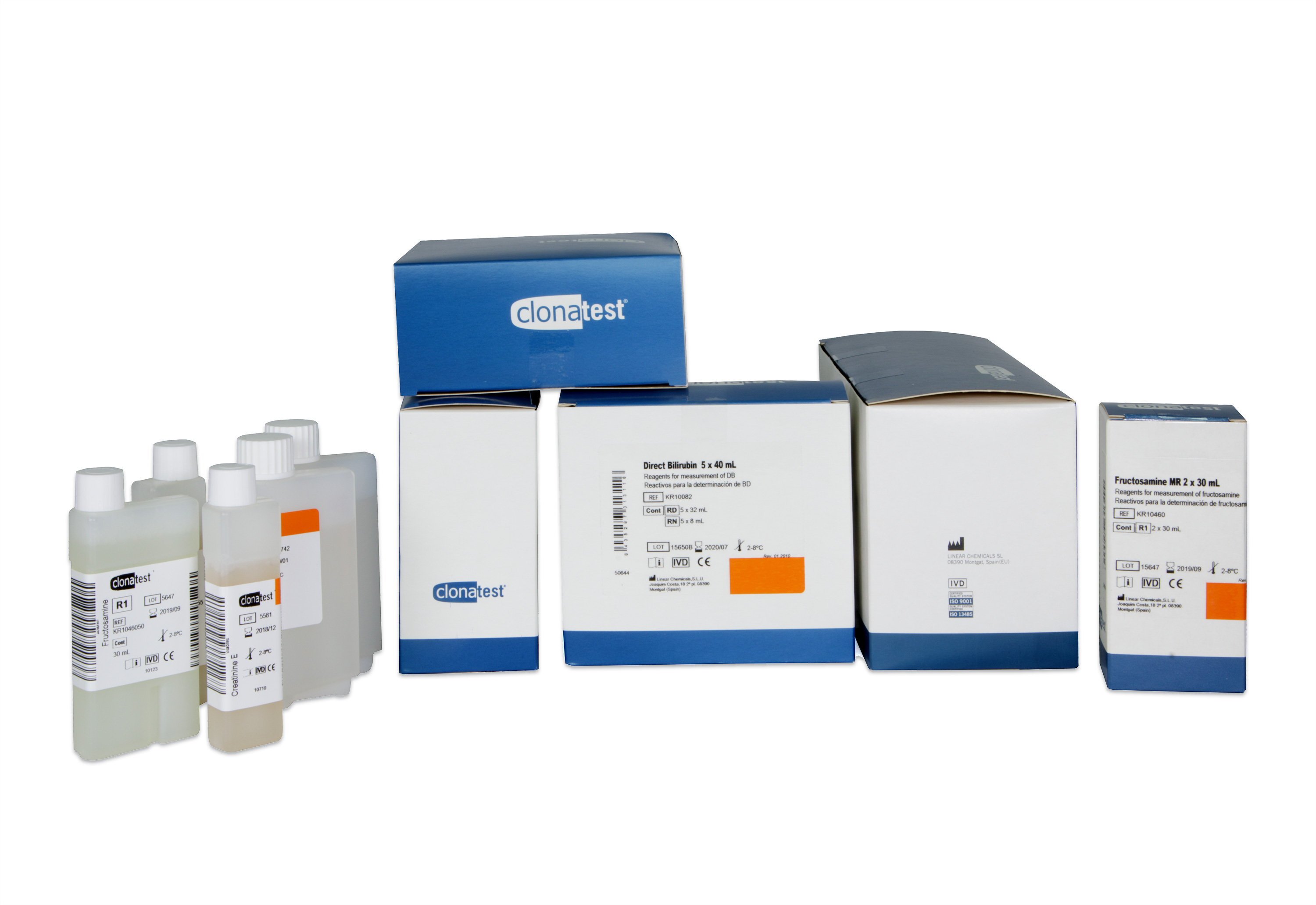

Cromatest
378 results
-

LDL-Cholesterol Direct 40 ml
1142005 -

LDL-Cholesterol Direct 320 ml
1142010 -

LDL-Cholesterol Direct 5x40 ml
KR10290 -

LDL-Cholesterol Direct 1x40 ml
KR10292 -

LDL-Cholesterol Direct 1x60 ml
CT10290 -

Lipase 1x36 ml
KR10430The method is based on the segmentation of the specific chromogenic substrate 1,2-O-dilaurylrac-glycero-3-glutaric- (6'methyl-resorufin)-ester emulsified in stabilising micro-particles. In the presence of specific pancreatic lipase activators such as colipase, calcium ions and bile acids, the substrate is transformed into 1,2-O-dilauryl-rac-glycerol and glutaric acid-6′-methylresorufinester which spontaneously decomposes to glutaric acid and methylresorufin. The intensity of the colour formed is proportional to the concentration of lipase in the sample.
-

Magnesium 2x50 ml
1144005 -

Magnesium 1x40 ml
KR10310 -

Magnesium 2x40 ml
CT10310 -

Phosphorus UV 2x50 ml
1149005 -

Phosphorus UV 4x100 ml
1149010 -

Phosphorus UV 2x30 ml
KR10320